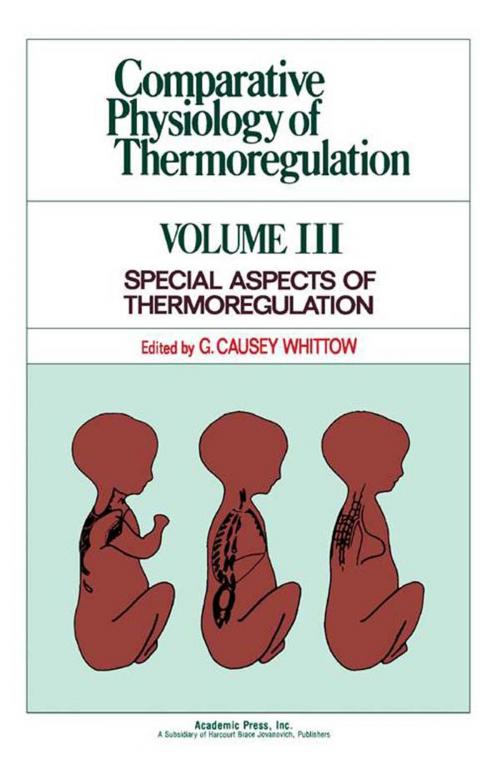Comparative Physiology of Thermoregulation
Special Aspects of Thermoregulation
Nonfiction, Science & Nature, Science, Biological Sciences, Zoology| Author: | ISBN: | 9781483257433 | |
| Publisher: | Elsevier Science | Publication: | October 22, 2013 |
| Imprint: | Academic Press | Language: | English |
| Author: | |
| ISBN: | 9781483257433 |
| Publisher: | Elsevier Science |
| Publication: | October 22, 2013 |
| Imprint: | Academic Press |
| Language: | English |
Comparative Physiology of Thermoregulation, Volume III: Special Aspects of Thermoregulation attempts to do three things: It completes the taxonomic organization of the first two volumes, with a chapter on the ""primitive"" mammals. It deals with special aspects of thermoregulation. Aquatic mammals must be considered in this category because they are the only ""warm-blooded"" animals that live in a medium which has an enormous cooling power compared with that of air. Torpidity is a dramatic thermoregulatory phenomenon displayed by only certain groups of mammals, while the newborn mammal faces special problems in thermoregulation that distinguish it from the adult. Finally, the last chapter complements the arrangement of the first two volumes by its treatment of the evolution of thermoregulation from the standpoint of physiological systems rather than classes of animals.
It was initially hoped that this three-volume treatise would provide a useful reference work for the comparative physiologist. The reception accorded to the first two volumes suggests that this hope has been largely realized. However, it appears that the books have their greatest appeal to those engaged in the study of physiological ecology, and this lends to the work a currency which was not entirely anticipated at the time of its conception.
Comparative Physiology of Thermoregulation, Volume III: Special Aspects of Thermoregulation attempts to do three things: It completes the taxonomic organization of the first two volumes, with a chapter on the ""primitive"" mammals. It deals with special aspects of thermoregulation. Aquatic mammals must be considered in this category because they are the only ""warm-blooded"" animals that live in a medium which has an enormous cooling power compared with that of air. Torpidity is a dramatic thermoregulatory phenomenon displayed by only certain groups of mammals, while the newborn mammal faces special problems in thermoregulation that distinguish it from the adult. Finally, the last chapter complements the arrangement of the first two volumes by its treatment of the evolution of thermoregulation from the standpoint of physiological systems rather than classes of animals.
It was initially hoped that this three-volume treatise would provide a useful reference work for the comparative physiologist. The reception accorded to the first two volumes suggests that this hope has been largely realized. However, it appears that the books have their greatest appeal to those engaged in the study of physiological ecology, and this lends to the work a currency which was not entirely anticipated at the time of its conception.















